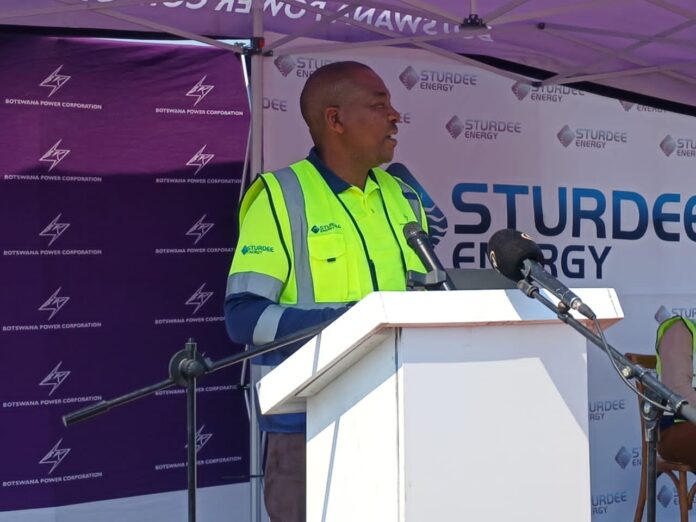10th September 2024
Sello Motseta
Botswana which experienced periodical power cuts between 2015–2022 adversely affecting business and economic growth is experiencing a surge in the development of energy sources through the government’s collaboration with independent power producers.
A reality built on its exploitation of its natural resources. This is especially the case with its abundance of solar power as it enjoys exposure of an average insolation on a flat surface of 21 Megajoules per square meter. This amount of insolation is among the highest in the world, making Botswana a potential hub for solar generated energy revealed officials during the launch of the 1MW Solar Plant in Shakawe by STURDEE ENERGY.
The project created 284 temporary jobs for citizens during the construction period.
“It is therefore gratifying that today we are celebrating yet another significant milestone in our energy transition journey as we witness the successful commercial operation of our second small scale solar photovoltaic project. This confirms our commitment to implement renewable energy projects in our Integrated Resource Plan (IRP),” said Lefoko Moagi, Minister of Minerals and Energy at the official launch of the 1MW Solar Plant in Shakawe.
He said, “The IRP envisages securing a total of 1,076 megawatts of renewable energy comprising 636 megawatts solar PV, 200 megawatts concentrating solar, 100 megawatts wind and 140 megawatts battery energy storage.”
Botswana National Energy Policy and Vision 2036 call for a diversified energy system, with renewable energy sources contributing 30% to the energy mix by 2030, increasing to 50% by 2036.
“We will be able to charge low tariffs and still remain competitive. Solar is cheap,” said David Kgoboko, Chief Executive Officer(CEO) of the Botswana Power Corporation(BPC) at the launch of the solar power project.
He said, “We will have exclusive rights to buy power from project and sell to the region in the next 2 to 3 years because we will already have a surplus.”
Despite Botswana’s relatively low greenhouse gas emissions, and that the country is highly vulnerable to the devastating effects of climate change, Botswana has made a commitment to reduce its total greenhouse gas emissions by 15% by the year 2030 with reference to 2010 emissions.
Thirteen (13) Power Purchase Agreements (PPAs) for the development, construction, and operation of two utility scale and ten small scale grid-tied solar PV plants were executed by Botswana Power Corporation (BPC) and the selected Independent Power Producer (IPP) developers.
Two of the twelve small scale grid-tied solar PV plants including Shakawe 1 megawatt are already in commercial operation.
Phase 1 of the first utility scale solar PV project is under construction in Mmadinare area to supply 50 megawatts of renewable energy in January 2025.
Progress is also being made to secure an additional 50MW from the Mmadinare solar PV project to give a total of 100MW from the Mmadinare Solar Cluster by October 2025.
The second utility scale solar PV project of 100MW to be constructed in Jwaneng is at financing stage with an anticipated commercial operation by December 2025.
Public Private Aagreeement’s(PPA’s) for 8 small scale grid-tied solar PV projects with a combined capacity of 26MW were signed between BPC and 6 citizen owned companies. The projects are at financing stage and commercial operation is scheduled for December 2025.
“My Ministry is in the final procurement stage for a 200-megawatt concentrating solar plant to be located in Maun and a 100-megawatt solar PV plant to be located in Letlhakane. Commercial operation of these power plants is expected by end of 2026,” said Moagi.
A bankable feasibility study for 100 megawatts of wind generation was also recently completed and preparatory works for project implementation are in progress.
Government says it will enforce the local content provisions in projects procured by Government through the Ministry or its parastatal Botswana Power Corporation(BPC).
The local content requirements call for 40% shareholding by citizen owned companies for utility scale grid connected solar PV projects and the small-scale solar grid-tied projects are now reserved for 100% citizen owned companies.
“Transparency of expression of interest set by Government allowed us to set out a clear tender. It is also made it easier for us to secure international debt from Switzerland,” said James White, Executive Director of Sturdee Energy.
He said, “As investors we want a certain amount of certainity.”
Sturdee has solar power projects in Namibia, South Africa and Eswathini.









